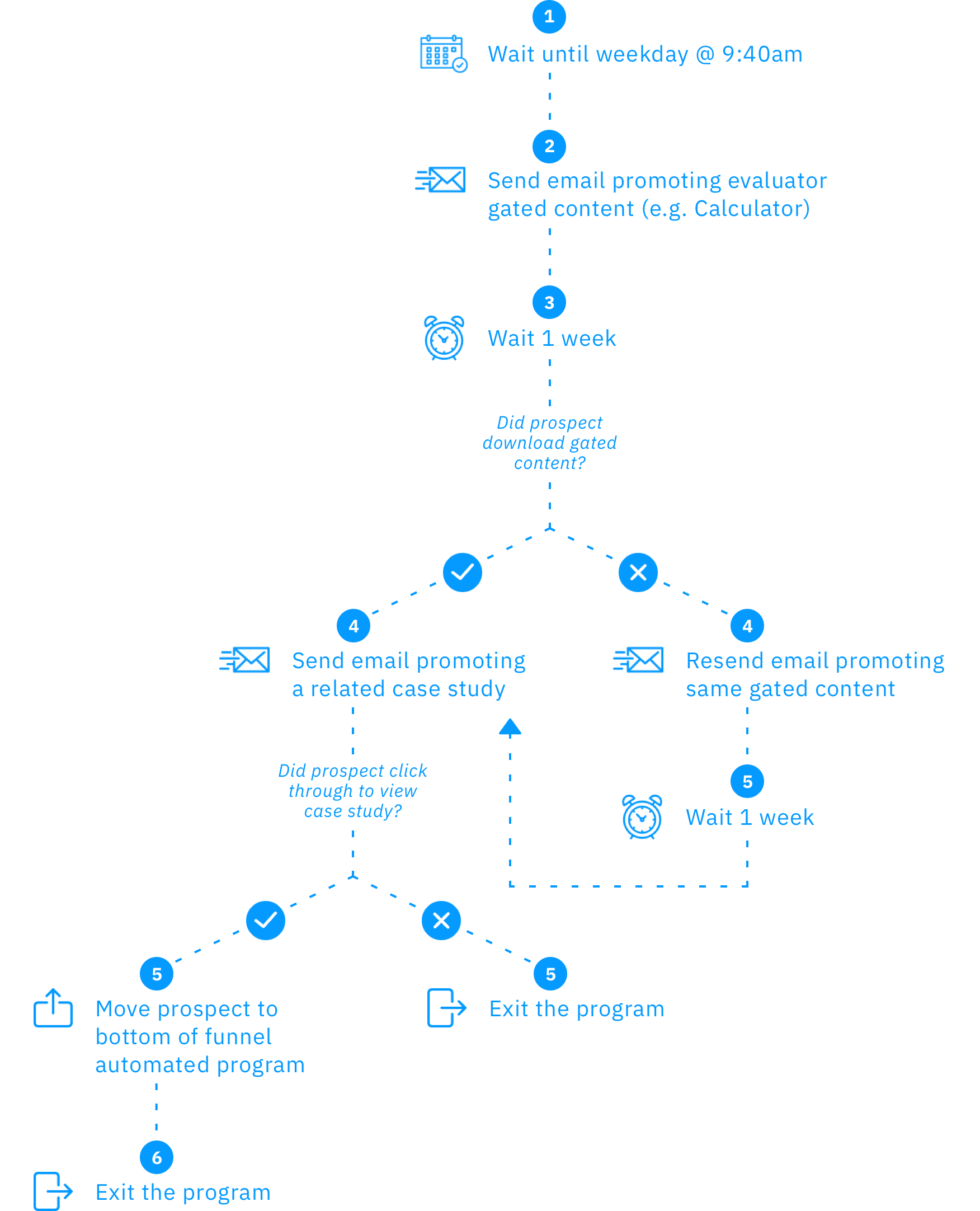In our article, 3 Easy Automated Programs to Nurture Top of the Funnel Leads we reviewed a few automated programs you can easily set up to nurture early stage leads. This installment is all about how to set up a middle of the funnel automated program.
The two main differences between top and middle of the funnel automated programs are:
- The criteria for the lead entering the program
- The content pieces being promoted
When should a lead enter the middle of the funnel?
Segmentation is the easiest and most effective way to identify and nurture your middle of the funnel leads. If a lead has knowingly revealed themselves as a specific persona, or other given other qualifying information that fit your target demographic, they should enter into a middle stage automated program. For example, if the following is true of a prospective lead, they should be considered middle of the funnel:
- They are an influencer or decision maker in their organization
- They represent an industry you’ve worked with before and hope to continue doing so
- They’ve engaged with your emails and/or been active on your site by viewing your thought leadership pages, and potentially accessed a form of gated content
Your automated program should track and continue to nurture the lead, helping you to determine if they are indeed a fit for your offering at this time. The primary goal of a middle of the funnel automated program is to determine when a lead has moved on from a researcher to an evaluator buy cycle stage. So, these types of programs are designed to collect more detailed information about your lead and where they fall in the buying cycle for your service.
What type of content should you promote to middle of the funnel leads?
Your automated program should promote persuasive, educational, and targeted content. To determine if a lead is ready to move from a researcher to an evaluator, this content should require a larger commitment from the lead (i.e. filling out a form) or promote evaluator content like a case study. Any piece of content that helps identify a prospect moving into a evaluator stage is fair game. Some popular formats for content that are used to nurture and identify evaluators are:
- Calculators
- E-books
- White papers
- Case studies
While these formats lend themselves to sharing evaluator type content, it is also possible that there are various articles or blog posts on your site that could be just as effective. The bottom line is that the content you share should be intentionally crafted to speak to the needs of those who are looking to purchasing your services, regardless of specific format.
Here is an example of an automated program for middle of the funnel leads:

When building an automated program and trying to identify what criteria to use, your best bet is to review how your best-fit clients map to the profile information you’re collecting, and how they engaged with your content along the path to becoming your client.
To move further down the sales cycle, a prospect should meet certain profile requirements, engage with specified evaluator content, and likely cross a certain lead score. If a lead enters a middle of the funnel automated program but does not engage with the content promoted, they can exit the program but remain in your CRM to be marketed to again in the future.
Why are middle of the funnel automated programs important?
Middle of the funnel automated programs are created to identify and push those leads which are ready to move into the bottom of your funnel. This is done by deepening the connection made in the top of the funnel with content that is specific to different segments of your overall audience. Middle of the funnel automated programs help to more effectively and efficiently move top of funnel leads to the bottom of the funnel. Without middle of the funnel automation, you’d likely have more leads in the top of the funnel longer, and worse, some leads which never realize that your company can help them solve the problems they have been coming to your site to educate themselves on.